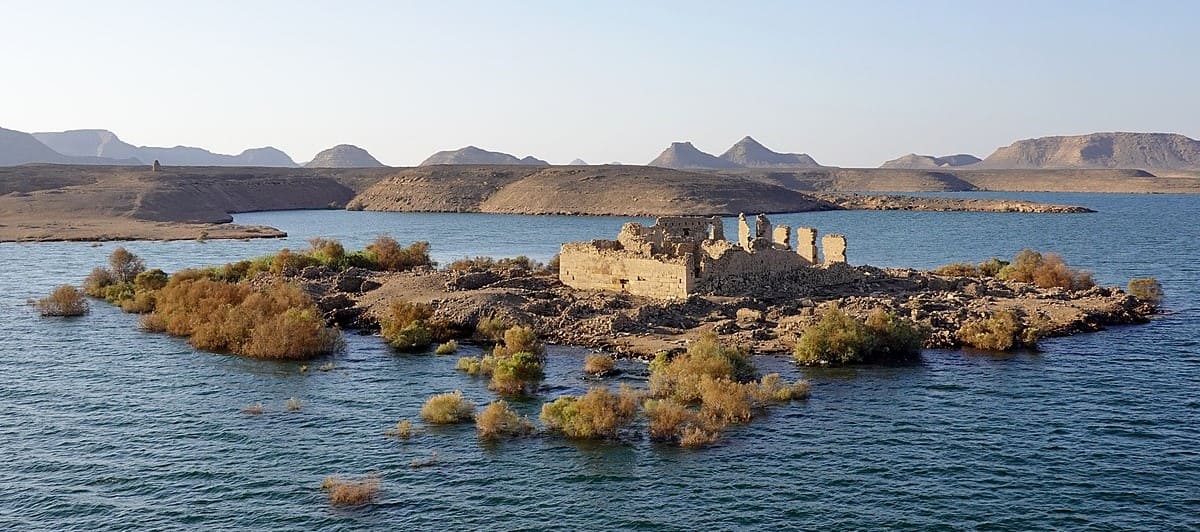Qasr Ibrim, Aswan
Qasr Ibrim is an archaeological site in the southern area of Egypt between Aswan and Abu Simbel. This important site derives its name from the nearby village of Ibrim, on the east bank of the Nile. Originally it was a major city on a cliff above the Nile, but the flooding of Lake Nasser after the construction of the Aswan High Dam transformed it into an island and flooded its outskirts. Qasr Ibrim is the only major archaeological site in Lower Nubia to have remained in its original location. Both before and after the Nile floods, it has remained a major site for archaeological investigations. Today, this complex is the last on Lake Nasser before Abu Simbel. Visitors may only gaze upon it from a Lake Nasser Cruise boat, as it is no longer accessible by tourists.

The site has a long history of occupation; ranging from as early as the 8th century BC to 1813 AD, and was an economic, political, and religious center. Part of the structure of the fortress was built during the reign of Augustus; a period from which Qasr Ibrim continued to be occupied sometime later. During the 18th and 19th dynasties, the shrines, and chapels carved into the rock dedicated to the reigning pharaoh and various gods and were the work of the viceroys of Kush.
Egypt’s influence in Nubia began around 2,000 BC when Egyptians invaded and claimed sovereignty over the area. Qasr Ibrim contains many Egyptian artifacts and evidence of Egyptian architecture; including tombs of the Nubian rulers during the New Kingdom times who ruled Nubia during the reign of Thutmosis III. The earliest inscription at the site is a stela, a stone or wooden slab, from the reign of Amenhotep I. The stela was found in a ruined Christian Byzantine cathedral at Qasr Ibrim where it had been reused in one of the church’s crypts. The stela is now located in the British Museum.
To explore Qasr Ibrim and the other Nubian sites, check out all our available Nile cruises and Lake cruises now from here